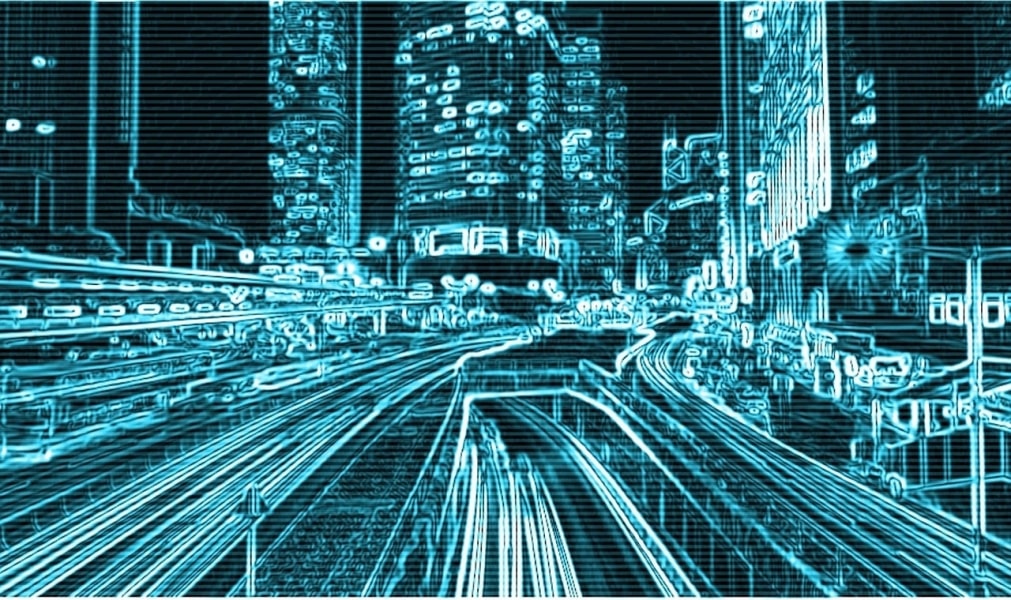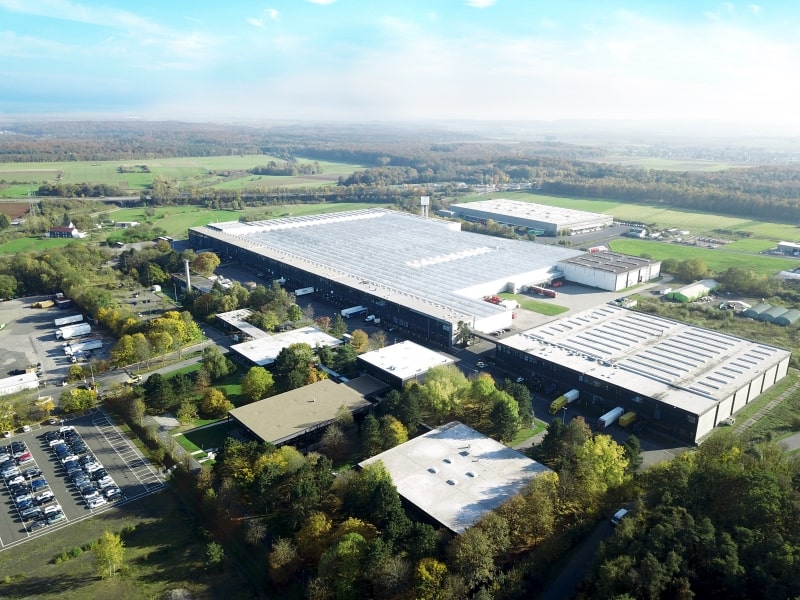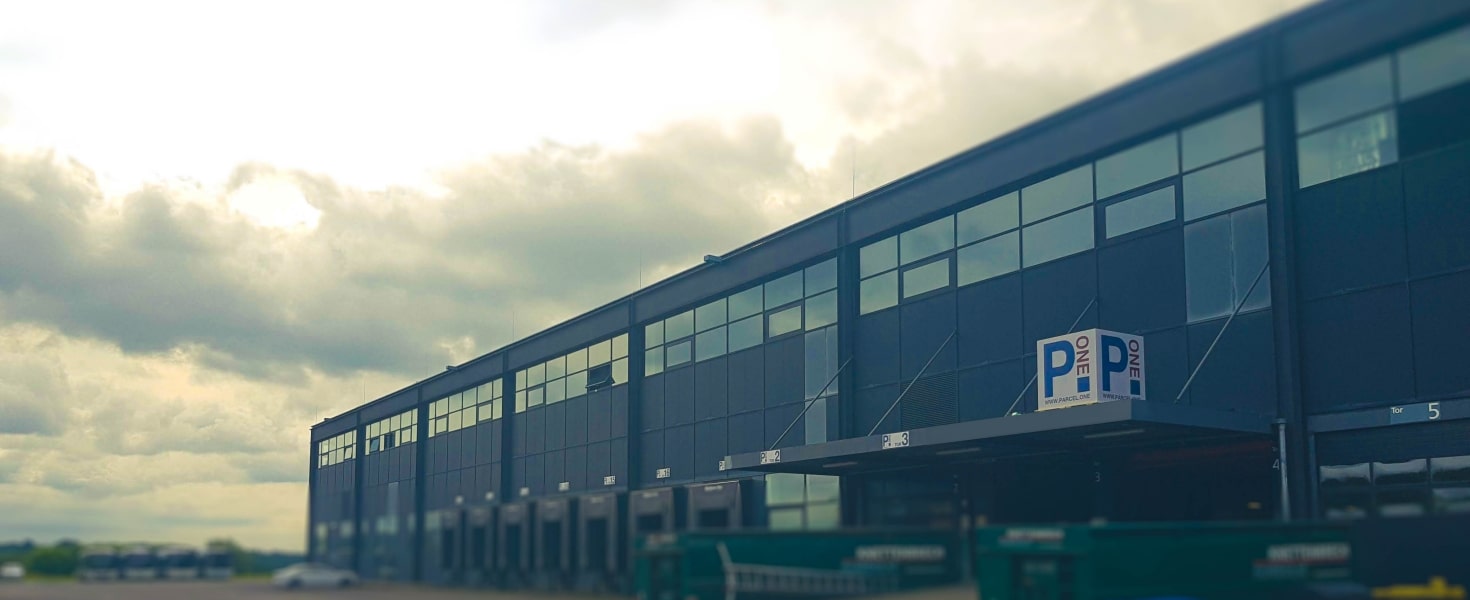Smart Cities: Smart mobility and sustainable logistics
Written by
Editorial TeamPublished on
Discover how digital innovation is transforming cities into smarter, more sustainable spaces! From cutting-edge mobility solutions to real-world examples like Copenhagen’s green initiatives and Frankfurt’s creative delivery systems, this article dives into the technologies and strategies reshaping urban living—don’t miss this glimpse into the future of smart cities! (Ad)

Commercial collaboration
We live in a digital world – that is an indisputable fact. Our private and professional lives are deeply influenced by new technologies. Through the adoption of those technologies, we hope to be more efficient and sustainable. One aspect of our everyday life that often gets overlooked when it comes to digitising is our environment. Cities are becoming more and more digital, but the possibilities are vast and haven’t been fully explored.
What makes a city smart and digital? Which areas can be digitised and what solutions are already in practice and can be adopted easily? Let’s take a look at the state of the art and future possibilities in the realm of smart cities. Especially the infrastructure and supply transportation needs to be examined as they make up a large part of making a city smarter.

What can be digitised?
City living covers many aspects that can be digitised: Public and private transportation, administrative services, waste management, delivery services, public safety and many more. Even seemingly smaller areas such as digital ticketing services for public institutions can make a difference when it comes to making these establishments accessible, sustainable and efficient. It quickly becomes evident that there is no lack of options and opportunity. It is simply a matter of realising the theories and revolutionising old patterns of how cities are designed.
The question arises: How far have we already come with the digitalisation of our cities?
Europe and Asia ahead in international comparison
Taking a look at the international landscape, the differences worldwide become evident. The IMD Smart City Index sees Europe and Asia in a particular leading role – Zurich took the first place in 2024, followed by Oslo and Canberra in second and third place. Geneva, Copenhagen, London and Helsinki are also in the top 10, while Asian cities are listed in the top 20 with Abu Dhabi, Dubai, Beijing, Taipei and Seoul, among others.
But what does this ranking truly mean? The project took a look at the areas health, security, mobility, activities, education and work opportunities, as well as the government sector. Within those areas the structures and technologies in use were examined. A few examples: public safety measures, availability of public internet, recycling facilities, possibility of online health appointments, prevalence of CCTV cameras, but also mobility opportunities such as car and bike sharing, e-scooters and more.
Taking a look at all these areas, German cities are already smarter than the average. However, there is obviously potential for improval. Some of the biggest cities like Cologne, Hamburg or Frankfurt have not made the ranking yet. This means that three out of the five biggest metropolitan areas do not qualify as of yet. The challenges that need to be overcome to make cities truly digital and smart are high. Cities must be completely rethought and the security of digital solutions must always be kept in mind. This also explains why no North American city has made the list of the top 20 smartest cities worldwide.
Smart mobility at the heart of smart cities
Mobility is an integral part of digitalisation. Only when the infrastructure of a city has been adapted to modern life can a city call itself smart. But what does smart mobility actually mean? Cities not only have to deal with traffic jams, but also with environmental pollution and the need to provide their inhabitants with mass and well-developed public transport. An elaborate public transportation is the only way to avoid congested roads. A smart city needs intelligent traffic management systems and a sustainable infrastructure for both public and private transport.
Some of these necessary changes can and must be implemented by the city itself through new guidelines, while others come from companies in the sector. For the former the solutions are the implementation of traffic-restricted areas, speed limits, pedestrian zones and the developments of bike lanes. In the latter area private companies need to step up and develop new solutions. Delivery service providers, for example, will also benefit from less congested streets and new technologies that optimise delivery routes and allow parcels to be delivered faster, more fuel-efficiently and in a more environmentally friendly way. The quieter city centres will also ensure that autonomous and interconnected delivery vans will be able to transport goods here in the near future. However, in order to make delivery traffic in cities as smart as possible, private individuals and public transport must also adapt to the guidelines of smart cities.
Concrete examples of smart mobility solutions
Smart cities, smart mobility, smart solutions – these terms and concepts are talked about everywhere, but only few truly explain what they mean instead of simply throwing around technical terms. Here are concrete examples of smart mobility solutions:
One part of a smart and digital infrastructure is the sustainability aspect. For this area the key is introduction of electromobility and the reduction of traffic as a whole. If the cars that are present within city limits don’t run on fossil fuels but renewable energy, the air will be less polluted and noise pollution will be minimised. Carsharing solutions on the other hand can be a helpful resource to the citizens and facilitate the reduction of cars within the city. Lastly, intelligent traffic guidance systems help the existing traffic run smoothly and minimise accidents. All these measures are part of the bigger picture of smart mobility.

The right technology for smart cities: Software solutions
After a quick overview of possible solutions, it is of interest to delve deeper into the matter of technological applications. Various technologies can be used today to implement smart mobility in the city. Sensors and cameras, for example, are used for traffic organisation. They can be used to control traffic lights or monitor which areas are busy and where the roads are emptier in order to divert other vehicles there. Artificial intelligence has a similar function in a smart city. It can avoid traffic jams by analysing road traffic and drivers, whether commercial or private, can use AI-controlled route planning to find the fastest and most environmentally friendly route through the city. These technologies can also help with parking. Diverting the traffic to parking lots with free spaces instead of long queues in front of full parking garages that hinder traffic further.
Municipal action plans
If city centres are completely smart, not only will traffic jams be avoided, but the lack of parking spaces and environmental pollution will also be counteracted. Cities have the opportunity here to provide electric charging stations across the board to promote the use of electric cars and to expand bicycle hire stations to allow private users to switch to an environmentally friendly and fast alternative. Adjustments such as these will reduce traffic on city streets, reduce greenhouse gases and also lower costs as there will be fewer traffic accidents as a result.
Copenhagen: Tomorrow’s solutions already in use
The Danish capital takes the sixth spot in the IMD Smart City Index and is also known as one of the most liveable and intelligent places worldwide. Let’s take a look at what makes this city stand out and which future technologies are already implemented into the city’s structure today. The three main goals Copenhagen has set out for its future development are being CO2 neutral by 2025, developing the economy further while also advancing sustainable projects. The neighbourhood Nordhavn has integrated an intelligent, flexible and optimised energy system that uses district heating in the power grid. The energy efficiency is extremely high. As well as that the project of reducing the traffic volume is set to increase sustainability and improve the quality of life of citizens. The already prevalent biking culture in Denmark is assisting these advances massively. The goal in the traffic sphere is that 75% of all travel in Copenhagen will be done by foot, bike or public transport. To facilitate this, buses and bikers are already given priority on the road today.
Frankfurt: Repurposing existing structures
Adopting sustainable measures doesn’t always have to be using new technologies and integrating enormous action plans. Oftentimes using what is already available is more worthwhile, as proven by the LastMileTram in Frankfurt. The pilot project ran for four weeks and it saw massive success. The idea as simple as it is ingenious: To combat traffic, packages were delivered via tram and bike. The results were less noise pollution, less delivery traffic and less emissions. The simplicity of this project shows that it’s not always about the newest and trendiest solutions, but about getting creative and repurposing established concepts. That is truly environmentally friendly.

Safety and Acceptance
While all these advances are important and the project of making cities smarter should be on the top of the priority list, the digitalisation of a city also entails risks, such as becoming the target of a cyberattack. This danger must be recognised in order to strengthen the cyber resilience of the smart city through precautionary measures such as firewalls, backups and awareness training for employees.
The new technologies – especially in terms of delivery – and new ways of mobility must not only be made possible through logistics companies and then implemented, but also accepted and used by the people.There is no point in revolutionising the digital infrastructure of the government, if citizens don’t understand new measures and therefore won’t make use of them. This also applies to electric cars as an alternative to combustion cars, autonomous driving as well as car and bike sharing services. Once these have become part of people’s everyday lives and they have realised their benefits, nothing will stand in the way of implementing a smart city. But for this to happen, people have to be thoroughly informed and educated about the new technologies and how to use them. Once that has been accomplished, the acceptance and incorporation into the daily lives will follow automatically.
***


